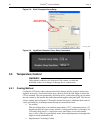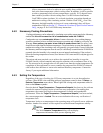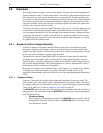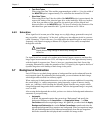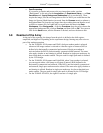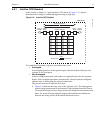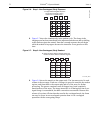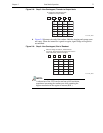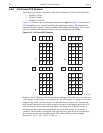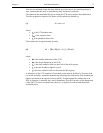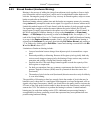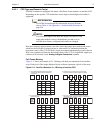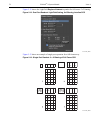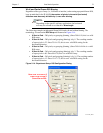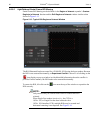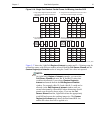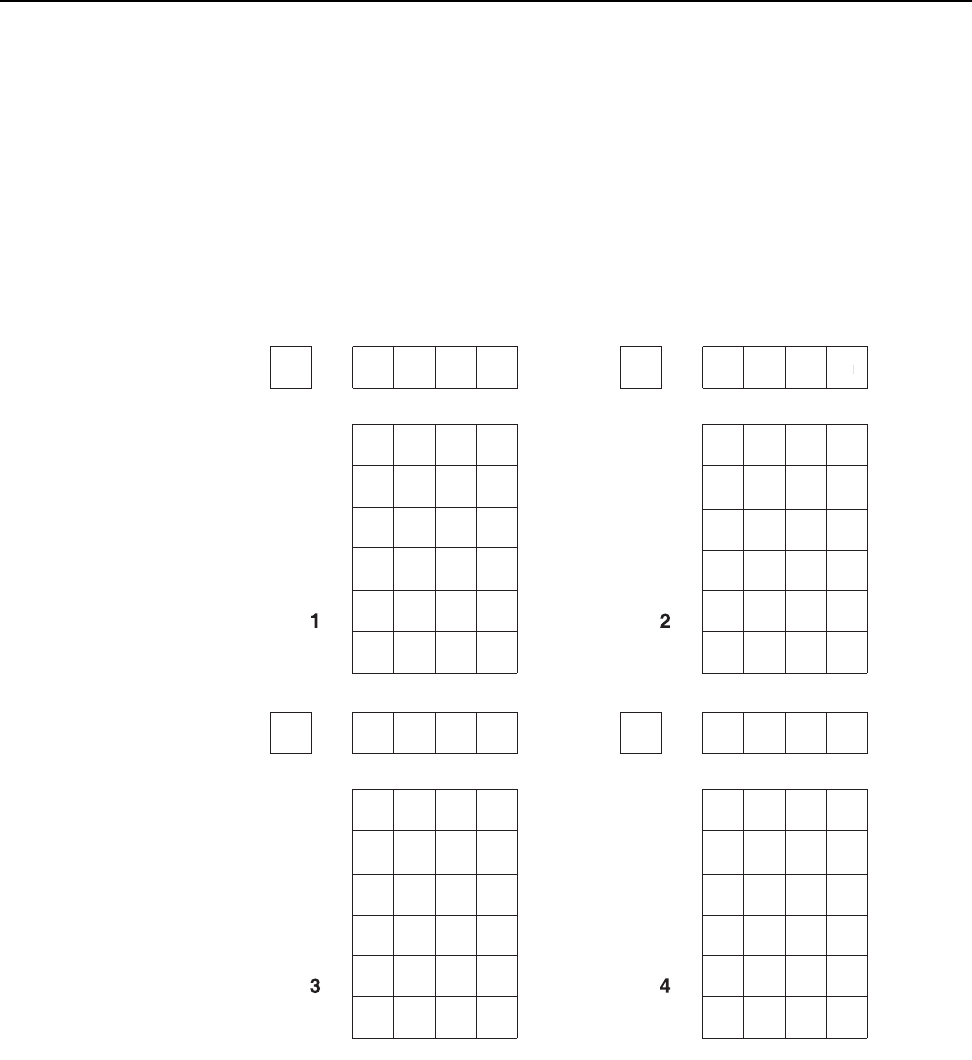
74 PI-MAX
®
4 System Manual Issue 4
5.8.2 Full-Frame CCD Readout
The following PI-MAX4 cameras use a full-frame architecture CCDs for data acquisition:
• PI-MAX4: 1024f;
• PI-MAX4: 2048f;
• PI-MAX4:1024x256.
Figure 5-10 illustrates the various stages of this process.
Step 1 in Figure 5-10 represents a
CCD immediately after exposure but before the beginning of readout. The capital letters
represent different amounts of charge, including both signal and dark charge. This section
describes readout at full resolution, where every pixel is digitized individually.
Figure 5-10: Full Frame CCD Readout
Readout of the CCD begins with the simultaneous shifting of all pixels one row toward the
“shift register,” in this case the row along the top. The shift register is a single line of pixels
along the edge of the CCD, not sensitive to light and used for readout only. Typically the
shift register pixels hold twice as much charge as the pixels in the imaging area of the CCD.
After the first row is moved into the shift register, the charge now in the shift register is
shifted toward the output node, located at one end of the shift register. As each value is
“emptied” into this node it is digitized. Only after all pixels in the first row are digitized is
the second row moved into the shift register. The order of shifting in this example is
therefore A1, B1, C1, D1, A2, B2, C2, D2, A3, ….
A1 B1 C1 D1
A2 B2 C2 D2
A3 B3 C3 D3
A4 B4 C4 D4
A5 B5 C5 D5
A6 B6 C6 D6
A2 B2 C2 D2
A3 B3 C3 D3
A4 B4 C4 D4
A5 B5 C5 D5
A6 B6 C6 D6
A2 B2 C2 D2
A3 B3 C3 D3
A4 B4 C4 D4
A5 B5 C5 D5
A6 B6 C6 D6
A2 B2 C2 D2
A3 B3 C3 D3
A4 B4 C4 D4
A5 B5 C5 D5
A6 B6 C6 D6
A1 B1 C1 D1 B1 C1 D1
A1 B1 C1 D1
4411-0137_0030



